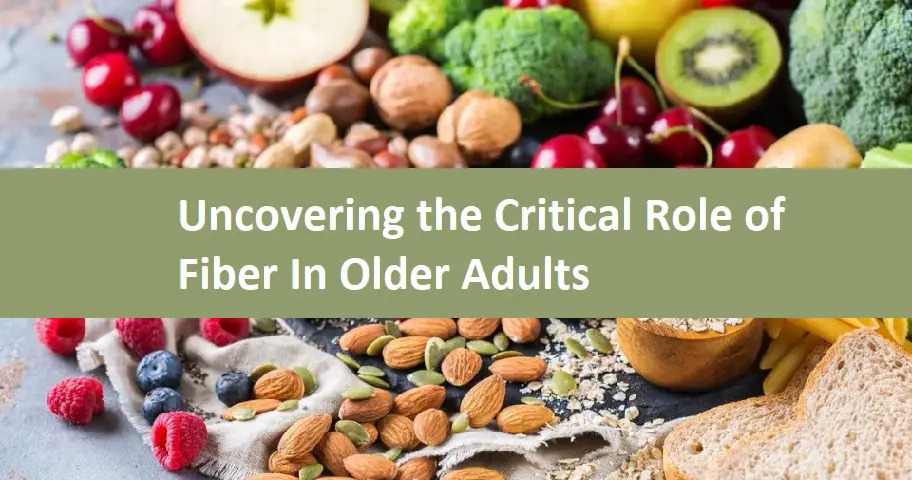Have you ever wondered why so many healthcare professionals are now focusing on increasing fiber in older adults? It turns out that fiber plays a critical role in promoting healthy aging. From boosting digestive health to reducing the risk of chronic diseases, increased fiber can help ensure seniors have the best quality of life. Let’s take a closer look at why is increased fiber important in older adults and what dietary changes are necessary for good health as we age.
About Fiber and Its Role in Health for Older Adults
Fiber is a type of carbohydrate found in plant-based foods such as fruits, vegetables, nuts, and grains. It helps promote digestive health by adding bulk to the stool and keeping it soft so that it can pass through the digestive tract more easily.
Additionally, fiber is important for healthy metabolism because it acts as food for “good” bacteria in the gut. This helps support a healthy immune system and can even help reduce inflammation, which is linked to conditions like heart disease, diabetes, and arthritis.
In addition to promoting digestive health, fiber is beneficial for weight management. One study found that people who consumed more fiber were less likely to gain weight.
Importance of Increasing Fiber Intake for Older Adults
As we age, our bodies become less efficient at breaking down and absorbing nutrients. This makes it even more important to get enough fiber in the diet, as it helps to slow digestion, keeping us full longer and helping to regulate blood sugar levels.
In addition to fiber’s role in promoting digestive health, increased fiber intake is associated with a lower risk of chronic disease. A study showed that eating a diet high in fiber was linked to a reduced risk of heart disease, stroke, type 2 diabetes, and some forms of cancer.
It’s also important for seniors to get enough fiber as it helps prevent constipation and other digestive issues associated with aging. A diet low in fiber can lead to digestive problems and an increased risk of developing complications such as diverticulosis.
Ways of Increasing Fiber Intake for Older Adults
Increase Fiber Step by Step
For seniors, it is important to make dietary changes gradually. Start by adding a few extra servings of fruits and vegetables daily, as well as other sources of fiber like beans, lentils, nuts, and whole grains.
Drink Enough Liquids
To get the most out of fiber, it is important for seniors to be hydrated by drinking plenty of water. This helps keep stools soft and easier to pass. In addition, try to avoid sugary drinks as they can contribute to weight gain and other health issues.
Add Fiber Supplements
If increasing fiber through diet alone seems difficult, fiber supplements are an option. Look for supplements that contain psyllium husk or methylcellulose, as these are most beneficial for digestive health in older adults.
Develop Healthy Habits
Making a few lifestyle changes can help seniors maintain their health as they age. Regular exercise, getting enough sleep, and reducing stress are all important for good health. Additionally, getting regular check-ups with your doctor is essential to monitor any potential issues that may arise with age.
Food That Is Rich in Fiber
Grains and Cereals
Oatmeal, barley, quinoa, and brown rice are all great sources of fiber.
Legumes and Beans
Beans, lentils, and chickpeas are all excellent sources of fiber.
Fruits and Vegetables
Apples, oranges, berries, carrots, potatoes, and spinach,
Nuts and Seeds
Walnuts, almonds, pumpkin seeds, and chia seeds.
Conclusion
Fiber is an important nutrient for older adults as it helps to keep them healthy and can reduce their risk of developing chronic diseases. Eating a diet rich in fiber is the best way to get enough of this vital nutrient, however, if that is not feasible, fiber supplements can be taken as a substitute.
Additionally, seniors should drink plenty of fluids and participate in regular physical activity for optimal health. With these tips, older adults can enjoy a healthy diet and lifestyle well into their later years.

Morgan Elfman is a compassionate writer, dedicated caregiver, and passionate advocate for senior well-being. Born and raised with a deep sense of empathy and a natural inclination towards service, Morgan has devoted her life to making a positive impact on the lives of seniors.
As a writer for www.choiceseniorlife.com, Morgan utilizes his skills to create insightful and informative content that addresses the unique needs and challenges faced by seniors and their families. Her articles not only provide valuable information on health, lifestyle, and care options but also strive to inspire and empower seniors to lead fulfilling lives.
